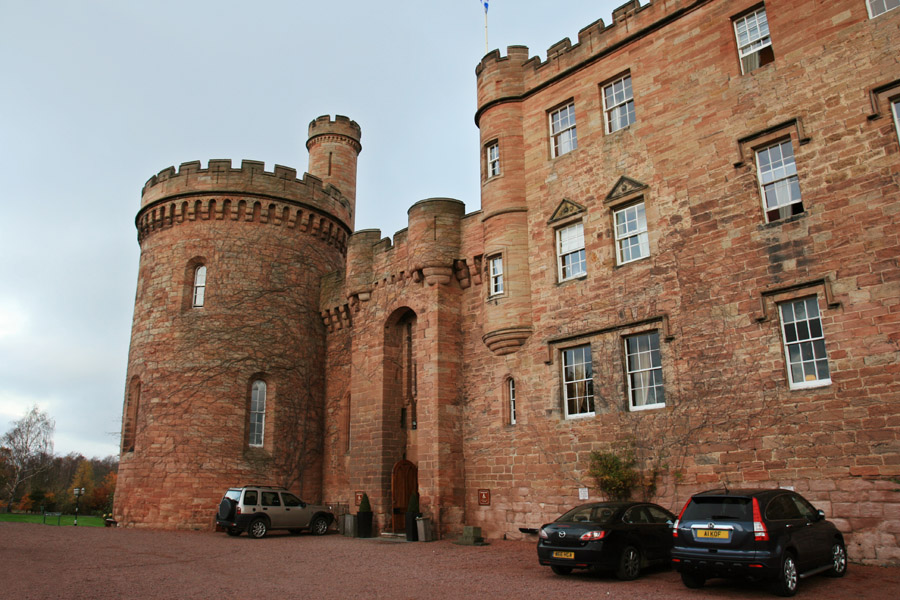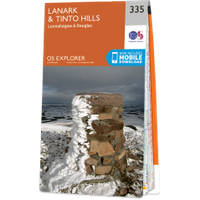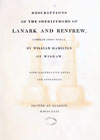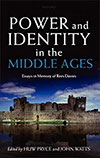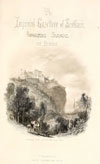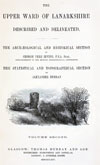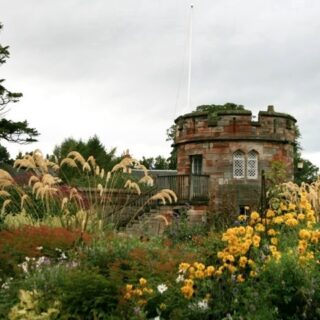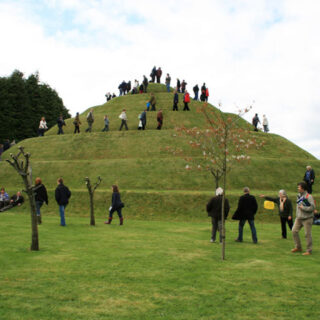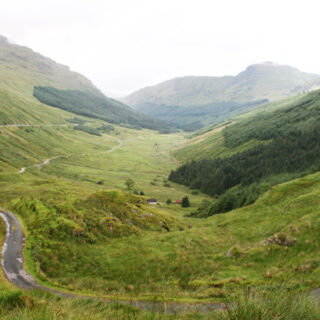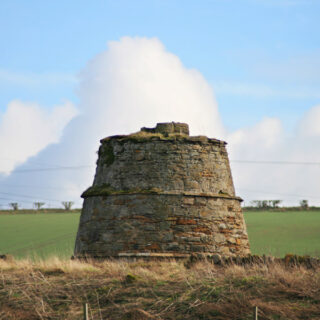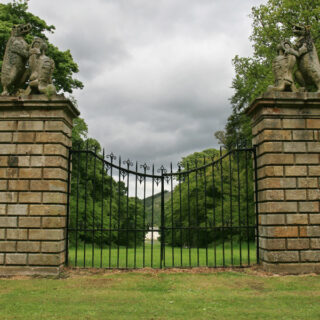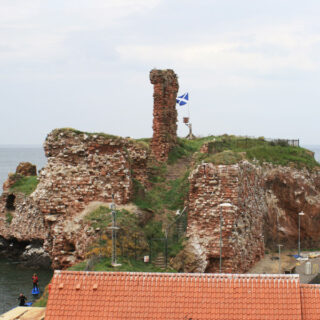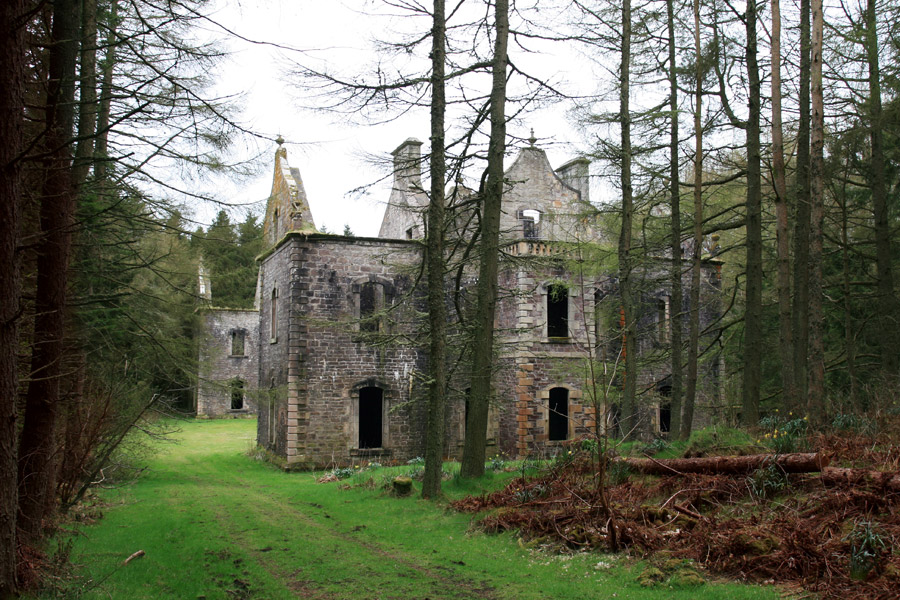
Carmichael

Carmichael was the seat of the barony of Carmichael from the 13th century until the 17th century, before being replaced by the mansion of Carmichael House in the 18th century.
The name Carmichael is said to derive from the site of an old church on Kirk Hill, just a few hundred metres east of Carmichael House, supposedly founded by Queen Margaret in the 11th century and dedicated to St. Michael. The hill may have been a fort, and with “caer” being the old word for a hillfort this is one suggested derivation of the name. It may also just be a corruption of Kirk Michael.
Carmichael as part of a name first appears in written records in 1220, when a Robert de Carmitely (evidently a misspelling) resigned all claim to the patronage of a church at Glegern (Cleghorn, a few miles north of Carmichael). Also in 1220 a Willelmo de creimechel (William of Carmichael) is a witness to the renewal of the grant of a mill at East Linton to the monks of Holyrood Abbey.
In 1259 an unnamed Baron of Carmichael is listed as a witness in the sale of a piece of land at Polnegulan in Lennox, while sometime between 1259 and 1286 there is a mention of a Robert, steward or seneschal of Carmichael.
If Carmichael was a barony in the 13th century, it’s likely that there was a castle here at this time. However very little seems to be known about it.
Robert the Bruce granted Sir James Douglas “the valley of Duglas, and the whole land and tenement of Kirkmychel” in 1321. These lands were inherited in 1342 by Douglas’ nephew, William Douglas (later created the 1st Lord Douglas), who granted the Carmichael lands to one of his vassals around the middle of the fourteenth century. This vassal subsequently became known as William de Carmichael.
William de Carmichael’s son succeeded him, as John de Carmichael, and is described as the first Baron of Carmichael. The second Baron of Carmichael, another William, is said to have built the first castle at Carmichael in 1414. However it seems likely that there was a castle here prior to that time, and 1414 may have been the date that a charter was confirmed to William.
By the 15th century the Carmichaels seemed to be an important family, and this William’s son, Sir John Carmichael, fought alongside the French against the English at the Battle of Baugé in 1421. He became the Bishop of Orléans in 1426 (in France he is known as Jean de St Michel).
The Carmichaels had a second property nearby, Eastend. It may have been used by the eldest son and heir of the head of the family at Carmichael.
There is a theory that Eastend became the home of a branch of the Carmichaels of Carmichael which separated from the main line around 1500, although it is not clear if that is the case. It is also unclear whether the Carmichaels of Carmichael or the Carmichaels of Eastend were the senior branch of the family at the earliest times.
A later Sir John Carmichael was, in 1569, the keeper of Waughton Castle in East Lothian, which seems to have been forfeited by the Hepburns as a result of their support for Mary Queen of Scots at the Battle of Carberry Hill in 1567. Sir John was also one of the ambassadors sent to Denmark to negotiate the marriage between James VI and Anne of Denmark, and as a reward for this was granted Fenton Tower, also in East Lothian.
Sir John’s heir was his fourth cousin, Sir James Carmichael of Westraw (later created the 1st Lord Carmichael), who fought alongside Charles I during the English Civil War. Presumably as a result of this the castle of Carmichael was destroyed by Oliver Cromwell during his Scottish campaign of 1650. At this time the family moved to their property of Westraw at Pettinain.
Upon his death in 1672, Sir James was succeeded by his son, John Carmichael, as 2nd Lord Carmichael. He held various high offices, including Keeper of the Privy Seal of Scotland, Lord High Commissioner to the General Assembly of the Church of Scotland, and Secretary of State from 1699 to 1702. In 1701 he was created the 1st Earl of Hyndford.
It is said that John Carmichael, the 3rd Earl of Hyndford, was responsible for starting the building of the new mansion of Carmichael House in 1734, on the site of the old castle. However, since the 3rd Earl didn’t succeed until 1737, either the date of building is wrong, or work was started by the 2nd Earl. It is possibly more likely that it was built between 1754 and 1767.
To further confuse matters, William Hamilton, writing around 1710 (but published in 1831), says of Carmichael:
It has a good substantious old house, much repaired and well finished of late; very well planted, with a noble avenue from the house to the church.
Descriptions of the Sheriffdoms of Lanark and Renfrew
William Hamilton, Glasgow, 1831
It may well be that the old castle was repaired following its destruction, then added to in the late 17th or early 18th century, before being replaced entirely by the new mansion later in the 18th century.
Roy’s map, published between 1752 and 1755, shows Carmichael House in its present position, at the centre of extensive gardens. Marked to the east of it, seemingly on the summit of Kirk Hill, is what has been interpreted as “Old House”, leading to suggestions that the old castle may have stood there. However the words actually read “Old Kirk”, and that of course is what is found there.
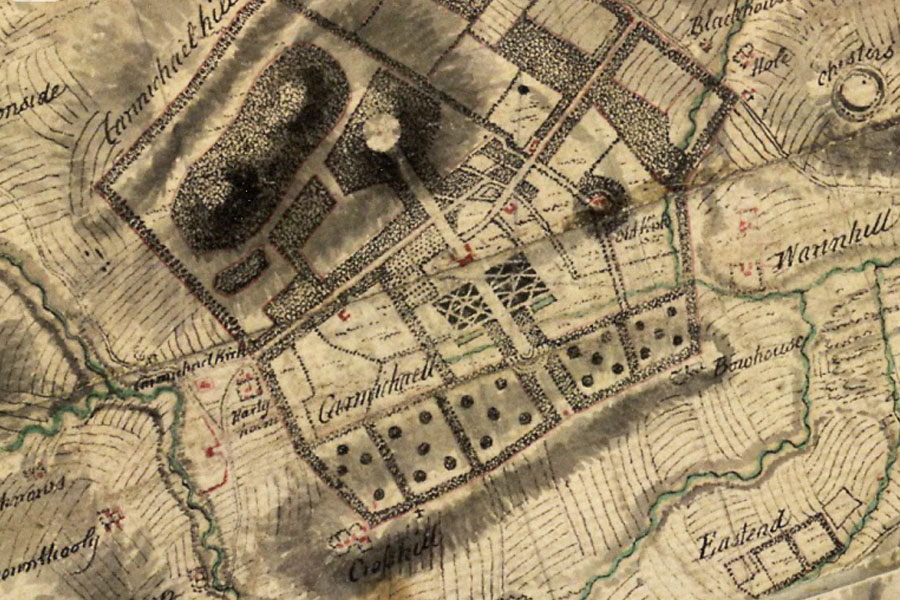
William Roy, 1752 – 1755
The architect of Carmichael House isn’t known, although there is a suggestion that it may have been one of the Adams, but this seems unlikely. The plan was for a house on a grand scale, but the plans were never fully realised, and only the east and west wings were built, with a small square tower standing between them.
The east wing is a five bay block, two storeys plus an attic in height, with shaped gables and urn finials and terminals. On the outer wall is a projecting central bay added in the 19th century.
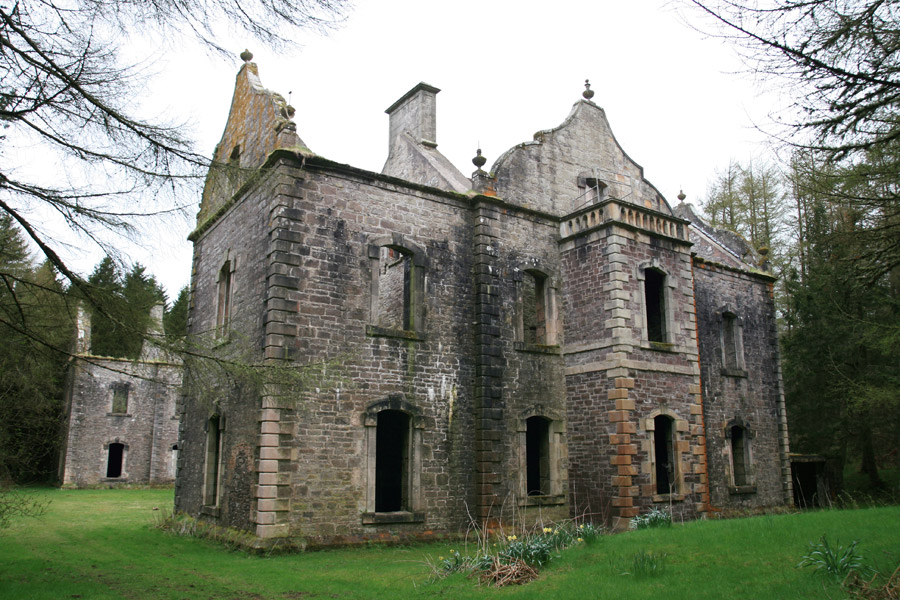
The ground floor is vaulted, the stone now exposed following the removal of the plasterwork.
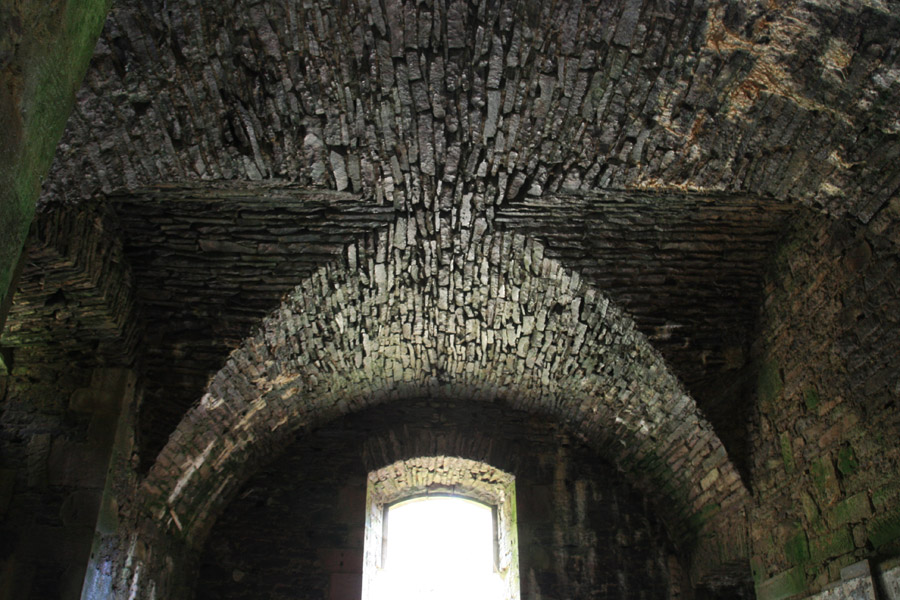
Hints of the house’s former grandeur can be glimpsed, with some laths remaining in places from the lath and plaster, and the existence of several fireplaces.
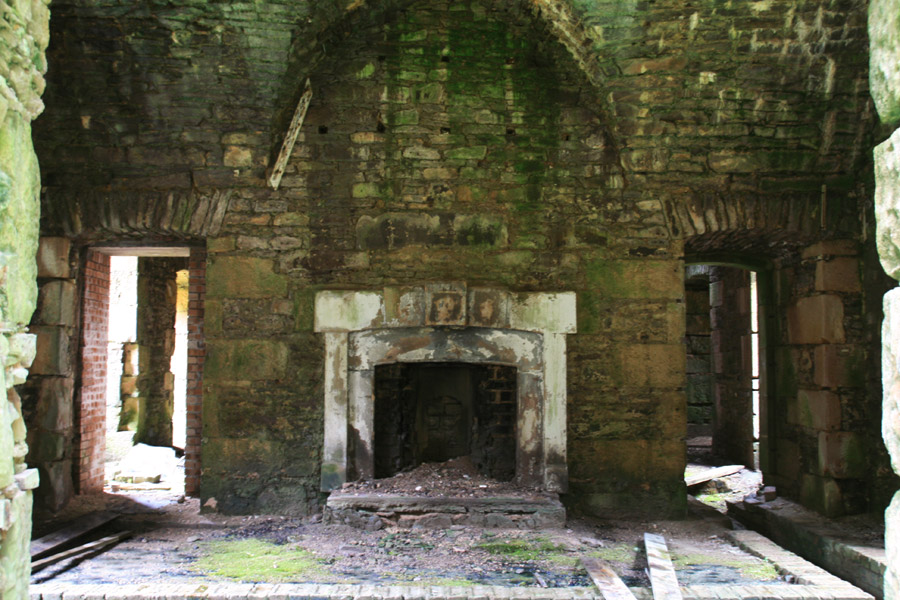
The inner wall facing the courtyard has a slightly protruding central three bays with a doorway in the middle on the ground floor. The doorway gave access to a corridor linking the two wings.
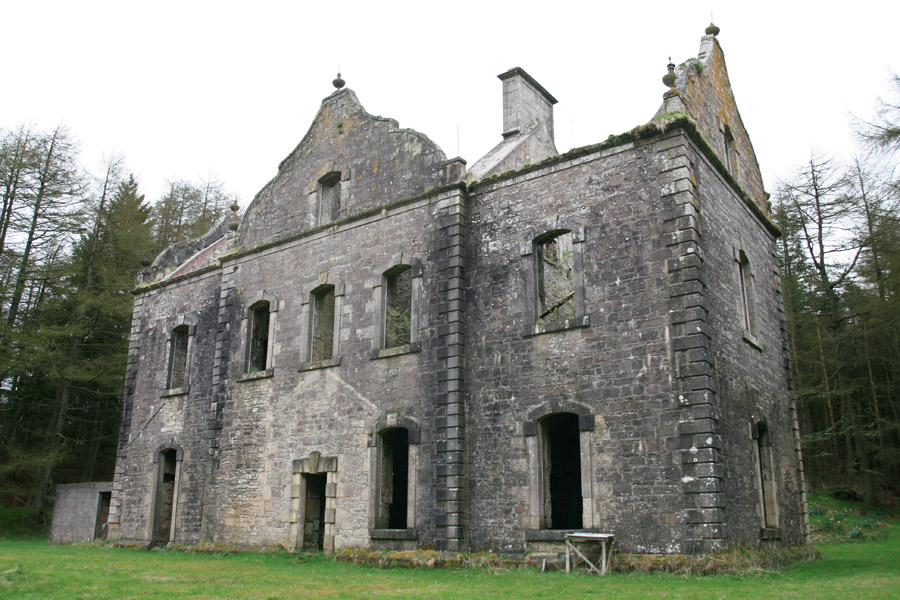
At the centre of this corridor is the small square tower, two storeys in height, with rounded arches on the south face, and on the east and west corridor faces. Most of the corridor has now gone, although some of the back wall remains on both sides.
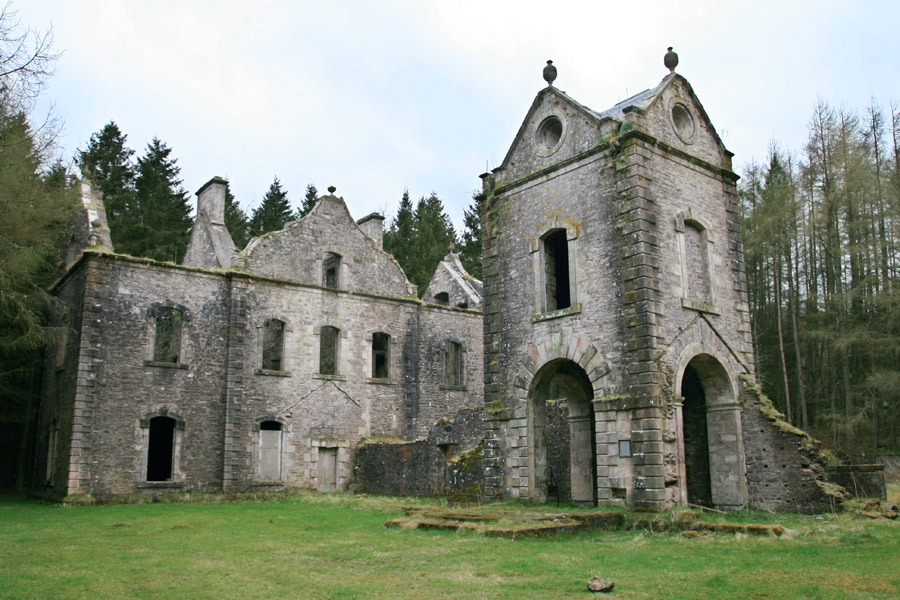
When the 6th Earl of Hyndford, Andrew Carmichael, died unmarried in 1817, the Carmichael estates passed to Sir John Anstruther of Anstruther, an ancestor of whom had married Margaret Carmichael, a daughter of the 2nd Earl of Hyndford. Adopting the name Carmichael-Anstruther, the family are said to have lived in Carmichael House until the Second World War.
However in “The Imperial Gazetteer of Scotland”, published between 1854 and 1857, the Reverend John Marius WIlson refers to “the now deserted family-mansion of Carmichael house”. Then in “The upper ward of Lanarkshire described and delineated”, published in 1864, George Vere Irving writes that Carmichael House was then occupied not by the Carmichael-Anstruthers but by the factor of the estates, while the ornamental gardens were in a “sad state of dilapidation”.
During the Second World War Polish troops were billeted at the house, and after the War it was sold to be converted to a nursing home. But when the company went bankrupt in 1950 the house was bought back by Sir Windham Carmichael-Anstruther.
However to avoid taxes and duties he removed the roof in 1952, and the doors, windows and interior furnishings were sold off. The house has stood as a ruined shell ever since.
When Sir Windham died in 1980, Carmichael House was inherited, along with the barony of Carmichael, by his cousin Richard Carmichael.
Between 1996 and 2000 the walls were restored and consolidated in a bid to prevent further deterioration. A plaque was erected on the central tower naming those who had contributed to the costs.
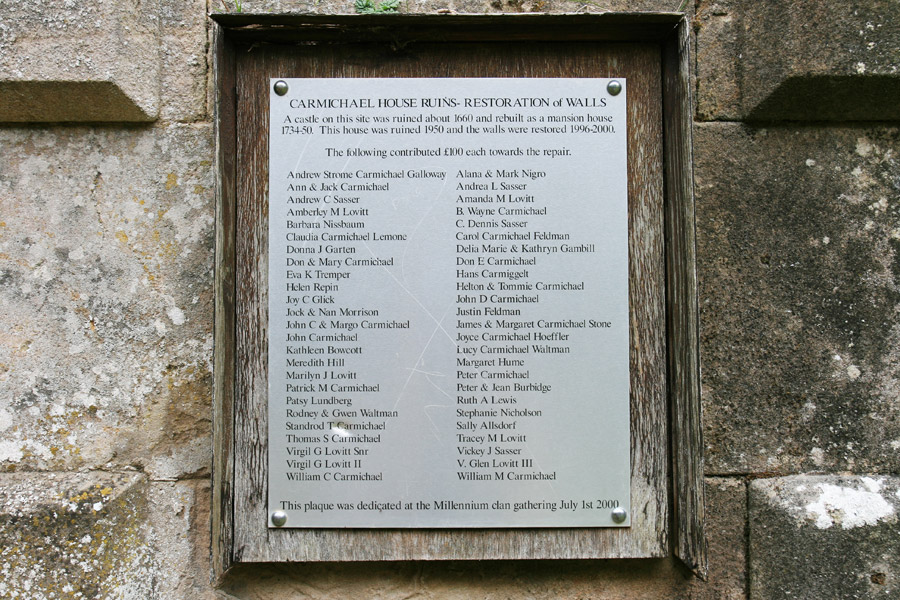
In 1996 the possible restoration of the house and conversion into a Carmichael Clan centre was explored, but didn’t ultimately come to anything. Carmichael House remains part of the Carmichael Estate.
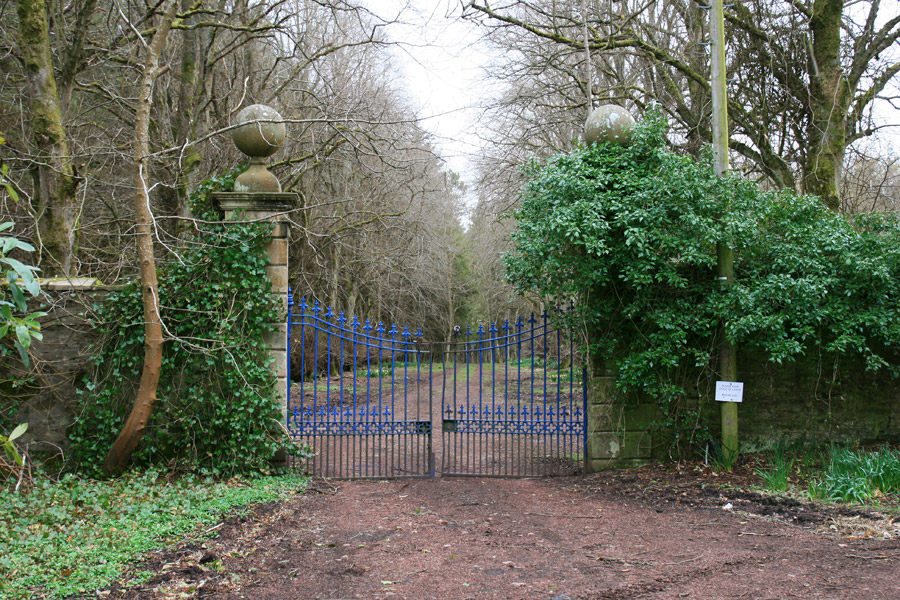
Alternative names for Carmichael
Carmichael House; Carmychel; Creimechel; Karemigel; Karmichael; Kermikel; Kirkmychel
